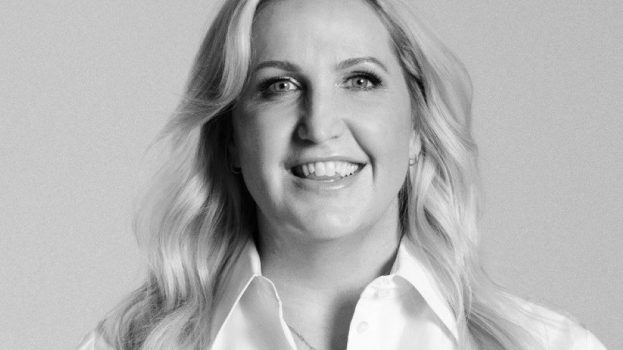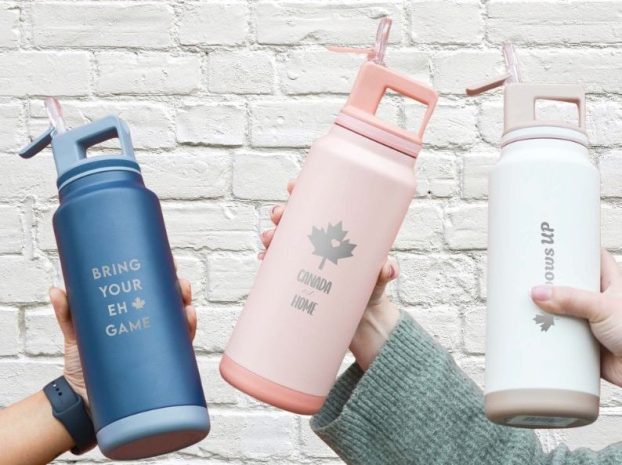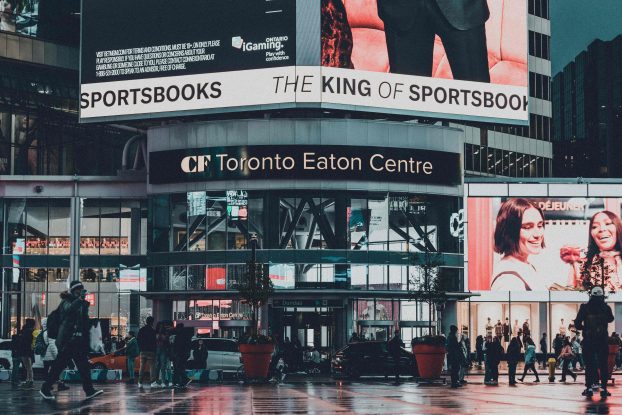For the second year in a row, DDB nabs the top Agency of the Year spot. Who knew a little animated salt shaker and a Snuggie-busting commercial could pack such a punch? The agency proved once again that it delivers the big (i.e. clever) ideas that, well, deliver.
“I’m very competitive and I’ll do anything to win that’s legal,” chairman and CEO Frank Palmer jokes (or perhaps he’s not joking), but he’s not just talking about awards. “We’ll go out of the way to do something for a client that will [result in] sales for them.”
After all, no other agency can take credit for the ridiculous (yet brilliant) Lap ’n Snack, as seen in the second round of Subaru “Get Out More” fake-out spots. The product innovations didn’t stop there – just check out those Chair Pants for BC Dairy Foundation’s Weak Shop.
When Palmer started in the ad business 40 years ago, there were six television channels, he recalls. It goes without saying that he’s seen media change drastically. “There was a time, looking at the Mad Men [era] commercials, you didn’t have to be good at everything, you had to be really good at one discipline – TV or radio or outdoor,” he says. “Today, it doesn’t matter how young or old you are, you have to be up-to-date on everything clients want to talk to you about.”
Which perhaps explains Palmer’s penchant for developing new practices – the shop currently has seven offshoots, the latest being DDB Hodes Recruitment Communications, a strategic alliance between DDB Recruiting and Bernard Hodes Group formed in the spring.
When asked what the agency of the future might look like, Palmer questions whether there will be agencies at all – at least in the form they take today. While it’s difficult to predict the nature of its structural evolution, Palmer says, “The new model of agency has to be living in continuous beta. They have to be innovative and unlimited in their ideas, they have to have a constant need for discovery…and they need to spend as much time [as possible] learning about technologies and human culture and behaviour,” noting that with today’s connective mediums, people are influencing each other in new and changing ways.
He also hopes that the way agencies get paid will change in the future to reward results. Palmer believes they should be paid to win like tennis pros and golfers, not just to play like hockey and football teams. Making another analogy, he says, “If I’m not the best heart doctor, why would you come to me? Your life is going to be in danger.”
As for DDB’s own structural evolution, this year saw former president of DDB’s Toronto office David Leonard promoted to president and CCO of DDB Canada. Todd Mackie and Denise Rossetto were named co-CDs of DDB Toronto after the departure of nine-year vet Andrew Simon. And Tribal DDB Vancouver is now headed by former business and strategy director Marty Yaskowich, who now takes the managing director title.
And besides nearly 20 new clients on the roster worth approximately $6 million for the agency, DDB also pitched and retained old clients Canadian Blood Services and BC Hydro. As for what DDB’s future will look like, Palmer says it will “still have to be about producing the big idea that can be delivered in any channel, because that’s our job at the end of the day.”
“We won’t be reckless, but we’re not going to play it safe. If you want to be noticed and you want to be around for the future, you better be doing something that doesn’t look like everybody else. I don’t think our game plan is going to change, I think [we’ll] continue to say, ‘how do we do the best job for our client, and beat the other agencies at doing it?’”
Knorr Sidekicks Salty to the curb
Competition in the meal accompaniment category was heating up. Uncle Ben’s had introduced Bistro Express, a rice side dish ready in two minutes (vs. 20 for Sidekicks), and Uncle Ben’s rice was perceived as a healthier option. To address these issues, Unilever’s Knorr brand introduced a line of lower sodium Sidekicks.
But consumers had become desensitized to the low salt message (it was expected) and delivering the news at face value wouldn’t be enough. Also, with the crazy pace of their daily existence, parents are often forced to rely on fast, easy (and thus usually less healthy)
pre-packaged meal solutions.
So instead of treating the health message in the usual serious terms, DDB decided to take a warm, witty, family-friendly approach with a character who was feeling emotional about the thought of life with less salt. Enter Salty, a lovable but dejected little salt shaker.
The integrated campaign launched on TV. With Michael Bolton’s “How Am I Supposed to Live Without You” as the backdrop, Salty trudged out into a dark and stormy night, unloved. The spot culminated with Salty watching the family enjoying the product and then crying salty tears. 
Salty’s story was brought to print, digital, direct mail and in-store. He was given a YouTube channel, Twitter feed, Facebook fan page, and would even pop up on Chatroulette to tell people how he was coping.
Job posters were placed around Toronto and Vancouver as Salty extended his job search to auto detailing, house cleaning and lawn care.
Actual salt and pepper shakers – Salty and Pep – made it into homes with neck tags that stated, “Use me sparingly.”
During the Q1 2010 period, the Salty campaign drove Sidekicks to the highest dollar volume (by quarter) the brand had seen in three years. It overtook Uncle Ben’s as the number one brand in the category.
Sidekicks.ca witnessed a 500% increase in consumer traffic, the highest in the brand’s history. Salty also became a social media star with 80,000+ Facebook fans and 500,000 YouTube views (and counting). And in less than 25 days, the first wave of 20,000 shakers sold out.
They created a campaign well worth its salt, even if it had been reduced by 25%.
Subaru Outback mobilizes couch potatoes
Although awareness of the Outback was at acceptable levels, familiarity and purchase intent were almost non-existent. Subaru’s share-of voice was less than 2% against giants like Honda and Toyota.
Subaru needed to expand beyond loyal hardcore outdoor enthusiasts and capture the attention of more moderate consumers with active lifestyles.
Many of these desired individuals were actually small SUV buyers, and about 25% were less loyal and more open to considering smaller brands. This group was younger, professional and better educated than the core customer. And many didn’t see the current small SUV options as being particularly functional beyond day-to-day city driving. The Outback would become the “outdoor enabler.”
As much as this group wanted to enjoy life outside of the city, they were spending more time indoors. To make them cognizant of their behaviour, the big idea was: “Maybe you should get out more.”

The campaign launched with TV, print, online and social media. TV used an actual Snuggie infomercial, which was suddenly interrupted by what seemed like someone from inside the television using a crowbar to tear down the screen. The Outback in the great outdoors was revealed along with the wake-up call, “Maybe you should get out more.”
Print ads featured Outback adventurers in picturesque settings playing off the infamous “As Seen On TV” moniker, except stamped with “As Not Seen On TV.”
An online community was created at Subaru.ca/getoutmore. Outdoorsy types could post personal recommendations of activities for ideas and inspiration.
A second TV spot featured DDB’s own fictional infomercial – the Lap ’n Snack. Like the Snuggie spot, someone again interrupted the action, this time with an axe smashing the screen.
It became the most successful launch of the 2010 Outback in the world – and among the most successful model launches in Canadian automotive industry history. Sales of the Outback were up 320% during the full campaign period. Average monthly Outback unit sales more than tripled, from 154 for the 12 months prior to the campaign, to 471 during the campaign period. Showroom traffic increased 25% and the Outback continues to post strong numbers.
CTC hits south of the border
The U.S. represents Canada’s largest in-bound travel market, but when the recession hit our southern neighbour, outbound travel went into steep decline.
The challenge for the Canadian Tourism Commission (CTC) was no longer to simply break through a crowded messaging marketplace; it was to show that international travel was affordable in the midst of the worst recession in history.
Through qualitative research, it was found that Canada was more of a “someday destination” – a long-term consideration. Americans were also consuming travel information differently. Fantasies to visit new destinations were being inspired by friends and online networks. The goal was to drive the consumer into the social space where they could join the conversation.
In television, user-generated content was used to tell a series of stories, for example in one :15 spot, we hear the infectious laughter of a kayaker and see his point-of-view as a seal climbs on top of his boat.
Print mimicked a YouTube page of a person taking a ride on a zipline and the header, “I haven’t screamed like a little girl since I was, uh, a little boy.” And in major newspapers including the New York Times, the front cover was taken over with “spadea” wraps that looked like an online blog including connection points and QR codes driving to the CTC’s social channels. The spadea creative also existed online where the content was live-linked allowing consumers to interact with long-form content and to connect across Facebook, Flickr, YouTube and Twitter.
Empty storefronts in New York, Chicago and Los Angeles were also transformed into social media platforms. Twitter-based murals featured interactive touchscreen interfaces that displayed tweets and photos from real travellers to Canada in real time. Consumers were encouraged to tweet back.
Consumer website visits were up 86% over same period in 2009 and Facebook fan sign-ups increased by 3,500%. The QR codes have garnered 4,539 scans to date. Just two weeks into the digital storescape campaign, the CTC experienced an 86% increase in Twitter followers. The work has also garnered extensive PR coverage.
Given all the success, plans to launch the program in Mexico and Europe are already well underway.
BC Dairy enables the weak
Back in 2002, a plan was hatched to reduce a 10-year decline in milk consumption, steepest among teens. Within six years, three ad campaigns targeting 16- to 24-year-olds had helped increase milk’s desirability, but now with growing competitive activity (in the form of slurpees, Red Bull and pop) along with the changing ways teens are communicating, attracting and maintaining their attention was becoming increasingly difficult.
Teens knew milk was healthy, but it lacked personality and therefore wasn’t top of their desired beverage list.
By speaking their language and delivering a nutrition message in an irreverent way, DDB could remind teens why milk played such an important part of their lives.
The campaign centred on The Weak Shop – a product line, retail entity and online catalogue that featured inventive products made for people who were too weak to perform everyday tasks, like carrying a wallet or lifting a fork. 
Two bricks and mortar stores opened in downtown Vancouver. Curious individuals could try products like Towel Clothes, an after-shower item that dries your body as you get dressed. Select products were available for purchase and all money was donated to charity. Milk samples were also distributed on site.
A web store, where visitors could view and order products, was also created at Theweakshop.com. Beyond links to follow The Weak Shop on Twitter, Facebook, YouTube and Flickr, the website included infomercial parodies. Big hits included Chair Pants, an instant seat for those tired of standing.
A contest invited consumers to submit their own ideas with the winning entry actually developed and added to the Weak Shop catalogue. The Grand Prize winner was Wash Spray – a showerhead equipped with a shower gel dispenser.
The Weak Shop contributed to an overall sales increase of 8% or $17.5 million. Since launch, the infomercials have been viewed 300,000 times and the website has received over 73,000 unique visits without broadcast support. The pop-up stores made an estimated two million impressions, and The Weak Shop appeared in newspaper articles, entertainment venues, an Australian morning radio show, product design websites and to top it all off, Late Night host Jimmy Fallon’s blog.
CCS puts up a fight
As cancer is the number one killer of Canadians, you’d be hard-pressed to find someone who hasn’t been touched by it. The Canadian Cancer Society (CCS) was the only major cancer charity in Canada for almost 50 years, but since 1998, that number has grown to over 225.
The CCS was “well known but not known well.” It needed to be reintroduced with a bold, modern attitude and a new
brand voice.
During research, it was discovered that those affected by cancer were most motivated by ideas about hope and optimism. Furthermore, they believed that they personally could make a difference, and their intense emotional involvement with the disease had manifested into courage and determination. Interestingly, they were talking about it in the third person as if the disease could be spoken to directly – like a bitter enemy. The goal was to transform the sadness and anger into a powerful movement to fight back.
A campaign called “Join the Fight” was developed, kicked off with a PR event that, with a donation, allowed people to throw paint balloons at a giant mural of the word “CANCER” and eradicate the word.
Two short films featured real people, unrehearsed, speaking directly to cancer. The English version “Fight” presented vignettes of people and their affected family members at home. The French version “Dinner” placed cancer survivors at a big table and let them berate the unseen, uninvited guest.
These drove to fightback.ca, which told stories of survivors, doctors and more. Radio used real people talking to cancer, and a series of posters used confrontational headlines like, “Cancer, if you thought chemotherapy hurt, wait ‘til you get a load of the new things we’re working on.”
The PR event generated 3,000 interactions and a 300% increase in traffic on Fightback.ca on launch day. The event generated over 17 million media impressions and a cost per contact less that $0.007. There were over 40 million impressions in the first four months of web activity.
The English film “Fight” was awarded a Silver Lion at Cannes and top prize at the YouTube DoGooder Nonprofit video awards.
Jump to:
Silver: Adrenaline & doubt fuel Taxi
Bronze: Welcome to the club, Sid Lee]
Honourable mention: BBDO’s winning insights
Finalist: CP+B’s winning evolution
Finalist: Lg2’s winning streak























